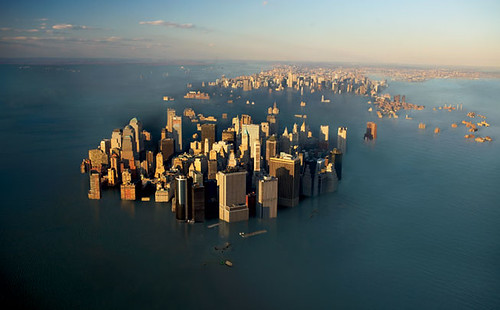 The UK House of Commons has released its report (PDF) on the issues associated with the release of emails and other materials from the Climatic Research Unit (CRU) at the University of East Anglia last November. The report keeps a tight focus on CRU and Phil Jones. It provides a nice summary of issues, complaints and responses but adds very little new substance, which is probably to be expected as the report is based on a single day of testimony and has been prepared in just a few weeks. It punts some of the more challenging issues to other ongoing investigations.
The UK House of Commons has released its report (PDF) on the issues associated with the release of emails and other materials from the Climatic Research Unit (CRU) at the University of East Anglia last November. The report keeps a tight focus on CRU and Phil Jones. It provides a nice summary of issues, complaints and responses but adds very little new substance, which is probably to be expected as the report is based on a single day of testimony and has been prepared in just a few weeks. It punts some of the more challenging issues to other ongoing investigations. Defenders of CRU will no doubt paint the report -- particularly the ambiguity of the rather trivial issues involving language, such as "trick" and "hide the decline" -- as a complete vindication of their arguments and those who have been critical will also focus on these phrases and call the report incomplete or a whitewash. These issues have always been a sideshow. The matters of greater importance are not about the behavior or language used by certain individuals, but rather what the released emails say about the culture and norms of institutions of climate science. On this subject the report offers a nuanced message. On the one hand, it largely explains the discussions and associated actions revealed in the emails as fairly normal for the profession. At the same time, the report offers of a fairly harsh rebuke of the profession for allowing such behaviors to become the norm.
Here are a few comments of some of the more interesting parts of the report:
We recognise that some of the e-mails suggest a blunt refusal to share data, even unrestricted data, with others. We acknowledge that Professor Jones must have found it frustrating to handle requests for data that he knew—or perceived—were motivated by a desire simply to seek to undermine his work. But Professor Jones’s failure to handle helpfully requests for data in a field as important and controversial as climate science was bound to be viewed with suspicion. He was obviously frustrated by other workers in the field trying to “undermine” his work, but his actions were inevitably counterproductive. Professor Jones told us that the published e-mails represented only “one tenth of 1%” of his output, which amounts to one million e-mails, and that we were only seeing the end of a protracted series of e-mail exchanges. We consider that further suspicion could have been allayed by releasing all the e-mails. In addition, we consider that had the available raw data been available online from an early stage, these kinds of unfortunate e-mail exchanges would not have occurred. In our view, CRU should have been more open with its raw data and followed the more open approach of NASA to making data available. . .Is the Committee really suggesting that Phil Jones should release a million emails (presumably he still can)? I seriously doubt that the information in a million more private emails among climate scientists would allay suspicion. This is just a bad idea.
. . . a culture of withholding information—from those perceived by CRU to be hostile to global warming—appears to have pervaded CRU’s approach to FOIA requests from the outset. We consider this to be unacceptable.
The Committee concurs with the ICO that there is evidence that CRU scientists broke UK law in their efforts to circumvent FOI laws. However, the Committee would like to see this issue investigated to closure, rather than abandoned at a preliminary stage due to the fact that no prosecutions would be forthcoming in any case due to the a statute of limitations:
There is prima facie evidence that CRU has breached the Freedom of Information Act 2000. It would, however, be premature, without a thorough investigation affording each party the opportunity to make representations, to conclude that UEA was in breach of the Act. In our view, it is unsatisfactory to leave the matter unresolved simply because of the operation of the six-month time limit on the initiation of prosecutions. Much of the reputation of CRU hangs on the issue. We conclude that the matter needs to be resolved conclusively—either by the Independent Climate Change Email Review or by the Information Commissioner.Like the advice to release a million emails, it is hard to see how this advice would allay suspicion. Given that there is consensus on what the prima facie evidence says, it would seem more likely than not that CRU and UEA would be found to have broken the law. A conclusive determination of this would probably intensify suspicions and even further damage the reputation of CRU, so much so that it would likely have to undergo some sort of serious institutional reform. A better strategy, in my view, would be to skip right to the institutional reform, rather than engaging in polarizing and damaging legal process with little formal significance.
The Committee suggests a broad indictment of climate science:
Reputation does not, however, rest solely on the quality of work as it should. It also depends on perception. It is self-evident that the disclosure of the CRU e-mails has damaged the reputation of UK climate science and, as views on global warming have become polarised, any deviation from the highest scientific standards will be pounced on. As we explained in chapter 2, the practices and methods of climate science are a key issue. If the practices of CRU are found to be in line with the rest of climate science, the question would arise whether climate science methods of operation need to change. In this event we would recommend that the scientific community should consider changing those practices to ensure greater transparency. . .
. . . A great responsibility rests on the shoulders of climate science: to provide the planet’s decision makers with the knowledge they need to secure our future. The challenge that this poses is extensive and some of these decisions risk our standard of living. When the prices to pay are so large, the knowledge on which these kinds of decisions are taken had better be right. The science must be irreproachable.




















